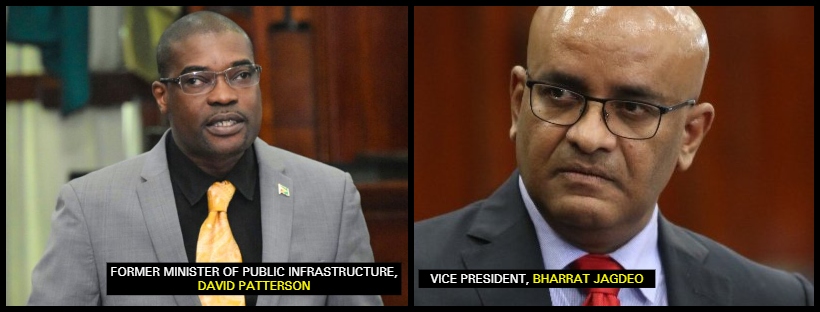Vice President, Dr. Bharrat Jagdeo has dismissed claims by Alliance for Change (AFC) Chairman and former Minister of Public Infrastructure, David Patterson that the cost for powership rentals are not only excessive, but the expenses are comparable to what it would cost the Guyana Power and Light (GPL) to generate the same power.
Following the announcement of an agreement being signed for a second powership with a total installed capacity of 75 megawatt (MW), Patterson criticized the government’s decision, claiming that Guyana would pay $126 million daily and $46 billion annually—funds he suggested could have been used for a permanent fix for GPL.
At his last press conference, Jagdeo dismissed Patterson’s remarks and noted that generating 75 MW of power locally using GPL’s fully depreciated equipment, costs approximately 18 US cents per kilowatt-hour (kWh). He added that when factoring in fuel and operational expenses, the cost rises to 20.6 US cents per kWh.
For the second powership, Jagdeo explained, the cost per kWh breaks down to 7.6 US cents for capacity as well as operation and maintenance (O&M), plus 13 US cents for fuel, totaling 20.6 US cents per kWh.
“For this one (the second powership), it’s slightly higher, 9.5 US cents here, so when you add the 13 US cents, it works out to 22.5 US cents per kilowatt-hour. That’s not just for the rental of the ship; that’s for capacity, O&M, and fuel. Patterson is ignoring that if we had to generate the power ourselves, it would still cost nearly the same,” he said.
The Vice President also pointed out that Patterson’s criticism ignores the context of the powerships as a temporary solution. “It’s for two years, so it’s bridging power until the gas-to-energy project comes on stream,” he explained.
Moreover, Jagdeo stressed the need to expand power supply to meet growing demand, driven by economic development, and criticized Patterson’s lack of action during his tenure. “Our demand has grown now, and he is saying, you know, that we could have fixed it. Well, we are fixing it through the gas-to-energy project. We are working on a big project that would solve it, but we have to get emergency power too,” Jagdeo stated.
He underscored that the rental of the powerships was necessary to ensure a stable power supply until long-term projects are operational, dismissing Patterson’s analysis as misleading. “You can’t calculate the rental of a ship as though you don’t have a counterpart cost if you generate the same power. It’s pure nonsense, but it looks like billions being spent unnecessarily when, in reality, we are renting capacity and ensuring operations and maintenance are covered,” he said.
Moreover, Jagdeo highlighted that the electricity being sold to consumers at 22 to 23 US cents per kWh but the cost of generation plus the transmission cost is nearly 30 US cents kWh. He reminded that government subsidy is what is keeping consumers’ electric bill the same despite increased fuel prices.











